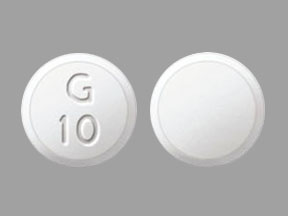Metformin Disease Interactions
There are 5 disease interactions with metformin.
Metformin (applies to metformin) lactic acidosis
Major Potential Hazard, Moderate plausibility. Applicable conditions: Congestive Heart Failure, Myocardial Infarction, Shock, Anemia, Dehydration, Alcoholism, Renal Dysfunction, Diarrhea, Asphyxia, Vomiting, Diabetic Ketoacidosis
Metformin is contraindicated in patients with acute or chronic metabolic acidosis (including diabetic ketoacidosis) with or without coma. Postmarketing cases of metformin-associated lactic acidosis have resulted in death, hypothermia, hypotension, and resistant bradyarrhythmias. Risk factors include renal dysfunction, age 65 years and older, hypoxic states, excessive alcohol intake, and liver dysfunction. Lactic acidosis has been associated with metformin accumulation in plasma at levels generally exceeding 5 mcg/mL. The risk of metformin-associated lactic acidosis increases with the patient's age because patients 65 years and older have a greater likelihood of having hepatic, renal, or cardiac impairment. Renal function should be assessed more frequently in older adult patients. Several postmarketing cases of metformin-associated lactic acidosis occurred in the setting of acute congestive heart failure, especially when accompanied by hypoperfusion and hypoxemia; cardiovascular collapse (shock), acute myocardial infarction, sepsis, and other conditions associated with hypoxemia (e.g., severe anemia, asphyxia) have been associated with lactic acidosis and may cause prerenal azotemia. When such an event occurs, metformin should be discontinued. Dehydration (e.g., severe diarrhea or vomiting) may increase the risk for volume depletion, hypotension, and renal impairment; such patients may be at increased risk for lactic acidosis. Alcohol potentiates the effect of metformin on lactate metabolism; patients should be advised against excessive alcohol intake while receiving metformin. All patients treated with metformin should have renal function monitored regularly (at least annually or more frequently if necessary). If metformin-associated lactic acidosis is suspected, general supportive measures should be instituted promptly in a hospital setting, as well as immediate discontinuation of metformin. If lactic acidosis is diagnosed or strongly suspected, prompt hemodialysis is recommended to correct the acidosis and remove accumulated metformin. Patients and their families should be educated about the symptoms of lactic acidosis and, if these symptoms occur, they should be instructed to discontinue metformin and contact their health care provider.
Metformin (applies to metformin) liver disease
Major Potential Hazard, Moderate plausibility.
Metformin decreases the liver uptake of lactate increasing lactate blood levels which may increase the risk of lactic acidosis, especially in at-risk patients. There have been reports of cases of metformin-associated lactic acidosis in patients with liver dysfunction. Metformin should generally be avoided in patients with evidence of hepatic disease.
Metformin (applies to metformin) renal dysfunction
Major Potential Hazard, Moderate plausibility.
The use of metformin is contraindicated in patients with severe renal dysfunction (estimated GFR [eGFR] less than 30 mL/min/1.73 m2). Metformin is substantially excreted by the kidney; the risk of metformin accumulation and lactic acidosis increases with the degree of renal dysfunction. Before starting metformin, an eGFR should be obtained. Initiation of metformin is not recommended in patients with eGFR between 30 and 45 mL/min/1.73 m2. An eGFR should be obtained at least annually in all patients; in those at risk of developing renal dysfunction (e.g., older adult patients), renal function should be assessed more frequently. In patients whose eGFR falls below 45 mL/min/1.73 m2, the benefit/risk of continuing therapy should be assessed. Postmarketing cases of metformin-associated lactic acidosis primarily occurred with significant renal dysfunction; metformin plasma levels generally exceeded 5 mcg/mL.
Insulin/oral hypoglycemic agents (applies to metformin) hypoglycemia
Moderate Potential Hazard, Moderate plausibility. Applicable conditions: Adrenal Insufficiency, Malnourished, Autonomic Neuropathy, Panhypopituitarism, Anorexia/Feeding Problems
Hypoglycemia may commonly occur during treatment with insulin and/or oral hypoglycemic agents. Care should be taken in patients who may be particularly susceptible to the development of hypoglycemic episodes during the use of these drugs, including those who are debilitated or malnourished, those with defective counterregulatory mechanisms (e.g., autonomic neuropathy and adrenal or pituitary insufficiency), and those receiving beta-adrenergic blocking agents.
Metformin (applies to metformin) B12 deficiency
Moderate Potential Hazard, Moderate plausibility. Applicable conditions: Folic Acid/Cyanocobalamin Deficiency, Anemia Associated with Vitamin B12 Deficiency
Metformin may interfere with vitamin B12 absorption from the B12-intrinsic factor complex. A decrease to subnormal levels of previously normal serum vitamin B12 levels was reported in about 7% of patients treated with metformin during clinical trials. Such decrease may be associated with anemia but appears to be rapidly reversible with metformin discontinuation or vitamin B12 supplementation. Certain patients (those with inadequate vitamin B12 or calcium intake or absorption) appear to be predisposed to developing subnormal levels of vitamin B12; caution may be warranted when metformin is administered to these patients. It is recommended to measure vitamin B12 every 2 to 3 years and hematologic parameters annually in patients on metformin. Any abnormalities should be managed.
Switch to professional interaction data
Metformin drug interactions
There are 381 drug interactions with metformin.
Metformin alcohol/food interactions
There is 1 alcohol/food interaction with metformin.
More about metformin
- metformin consumer information
- Check interactions
- Compare alternatives
- Pricing & coupons
- Reviews (660)
- Drug images
- Latest FDA alerts (18)
- Side effects
- Dosage information
- Patient tips
- During pregnancy
- Support group
- Drug class: non-sulfonylureas
- Breastfeeding
- En español
Related treatment guides
Drug Interaction Classification
| Highly clinically significant. Avoid combinations; the risk of the interaction outweighs the benefit. | |
| Moderately clinically significant. Usually avoid combinations; use it only under special circumstances. | |
| Minimally clinically significant. Minimize risk; assess risk and consider an alternative drug, take steps to circumvent the interaction risk and/or institute a monitoring plan. | |
| No interaction information available. |
See also:
Further information
Always consult your healthcare provider to ensure the information displayed on this page applies to your personal circumstances.


